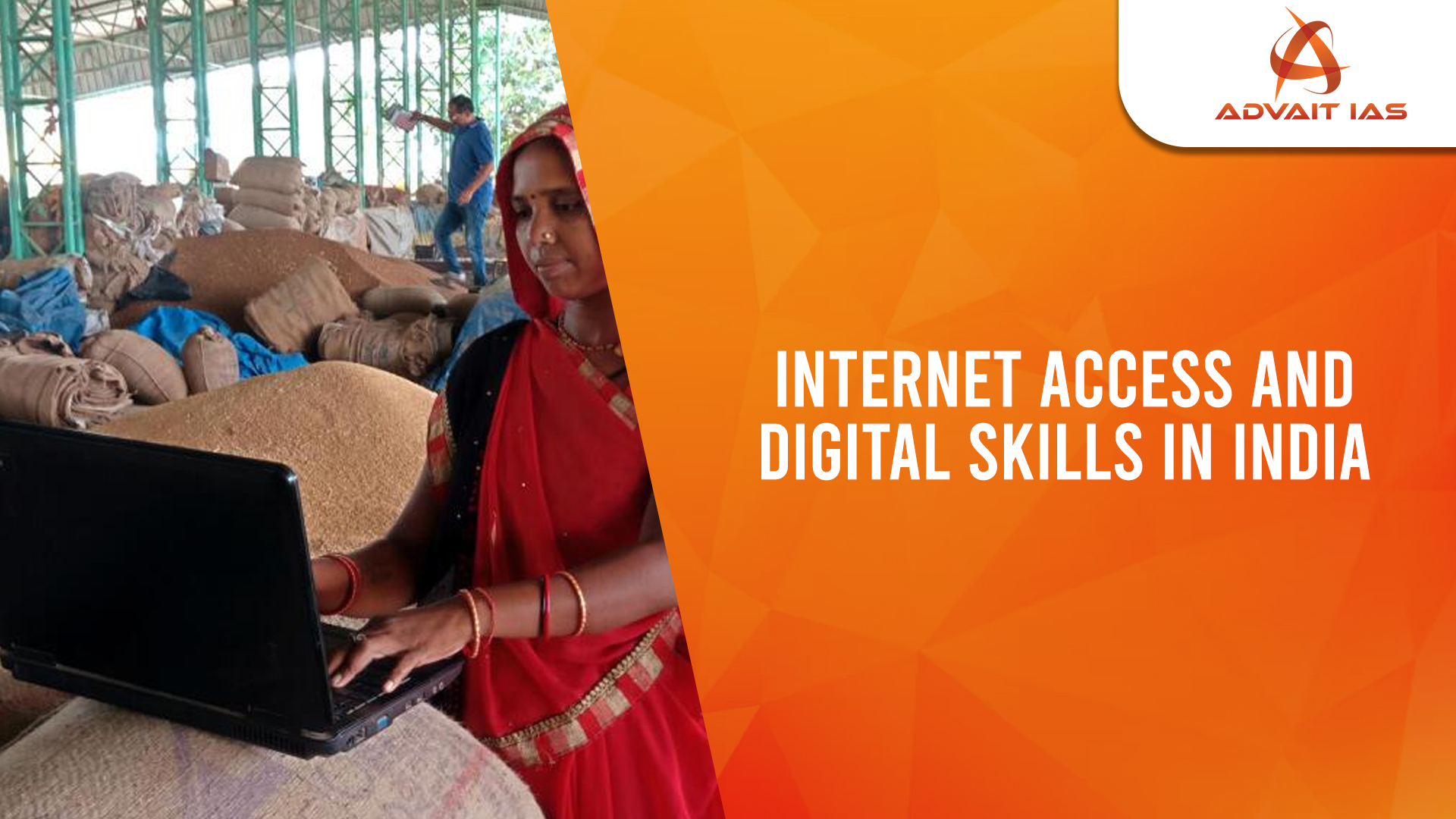The National Sample Survey Office (NSSO) conducted the Comprehensive Annual Modular Survey (CAMS) from July 2022 to June 2023.
- First large-scale survey assessing digital access and ICT skill levels among Indians.
- Aligned with Sustainable Development Goal (SDG) 4, specifically:
- Target 4.4.1: Proportion of youth/adults with ICT skills.
- Target 4.4.2: Proficiency in digital skill usage.
Key Findings from CAMS Survey (2022–23)
1. Internet Access in Households
- National average: 76.3% households have broadband internet.
- Urban: 86.5%
- Rural: 71.2%
- Top-performing states (>90% households):
- Delhi, Goa, Mizoram, Manipur, Sikkim, Haryana, Himachal Pradesh
- Lagging states (<70% households):
- West Bengal (69.3%), Andhra Pradesh (66.5%), Odisha (65.3%), Arunachal Pradesh (60.2%)
2. Social and Economic Disparities in Connectivity
- Caste-based gaps:
- General: 84.1%, OBCs: 77.5%, SCs: 69.1%, STs: 64.8%
- Income-based gap (MPCE Deciles):
- Bottom 10%: 6% lack broadband
- Top 10%: Only 1.9% lack broadband
- Even 2nd-lowest decile: 56.2% have access
- Government View: Broadband considered a basic utility, akin to water and electricity (Digital India Mission)
3. Mobile Access and Digital Usage
- Phone Ownership:
- Rural: 94.2%
- Urban: 97.1%
- Mobile Usage (15+ years):
- Rural: 83.9%
- Urban: 92.4%
- Gender Disparity in mobile use:
- Rural General Category Women: Only 25.3% exclusive mobile users
- Urban General Category Women: 51.2%
- SC/ST/OBC Women: Lower across both areas
4. Network Technology Usage
- 4G Use:
- Urban: >70%
- Rural: ~50%
- More primitive technologies: Used by 4% of population
- 5G Usage: Remains negligible nationally
5. Digital Skill Proficiency (Age 15+)
- Internet Use:
- Urban: 74%
- Rural: 53.6%
- Email Use:
- Urban: 40%
- Rural: 20%
- Copy-Paste Function:
- Urban: 60%
- Rural: 40%
- Spreadsheet Arithmetic: Very low overall proficiency
- Online Banking: Only 8% of population aged 15+ can perform online transactions
Challenges Highlighted
- Digital Divide persists across:
- Geography (urban vs rural)
- Social identity (caste, gender)
- Income groups
- Basic digital tasks like email and spreadsheets remain out of reach for large sections
Recommendations & Way Forward
- Subsidize broadband access for bottom deciles to achieve universal digital coverage
- Expand Digital Literacy Campaigns in rural and marginalized communities
- Integrate digital skills training into school curricula (aligned with NEP 2020)
- Prioritize women and socially backward groups in digital empowerment schemes
- Monitor SDG 4.4.1 and 4.4.2 through regular national surveys and disaggregated data
India has made significant strides in internet penetration, but digital literacy and skill equity lag behind. Realizing the promise of SDG 4 on quality education demands not just infrastructure, but also proficiency and inclusive access. Bridging the digital divide is central to inclusive growth, educational equity, and future readiness.






